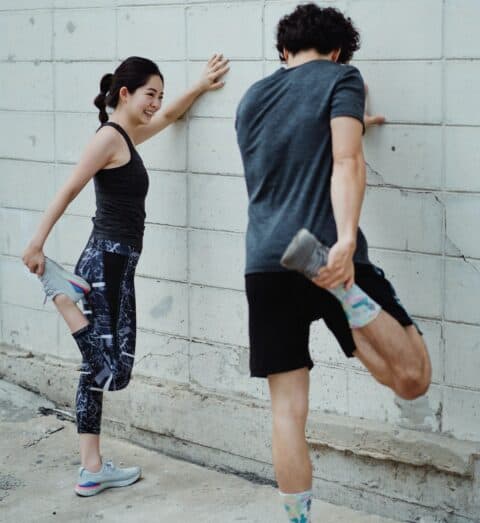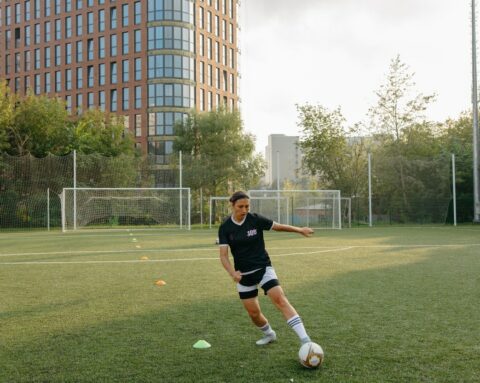Also referred to as Achilles Tendinopathy it is usually an overuse injury that is seen commonly in people who run regularly. Achilles Tendinopathy includes a large range of tendon issues including tendinitis but also referring to other Achilles tendon issues. Your tendons are the fibres that connect your bone to muscle and injuries to them often occur in locations near joints. Commonly this will refer to elbows, knees, shoulders and ankles. Tendon injuries most commonly occur due to small tears over time in the tendon which cause a sudden reaction.
Some common causes of tendon injuries include excessive intensity in your training sessions, lack of variation in your training, poor equipment for the activity or overtraining. Another common reason for tendon injuries is when you change your training surface. One example of this is when a runner changes from purely running on grass every day to doing road runs.
Certain individuals are far more susceptible to tendon injuries. You are at far more risk of Achilles Tendinopathy if you are over the age of 30 than when you are younger. Other risk factors to consider are your weight and lower limb muscle control. Achilles Tendinopathy is also more commonly seen in men than in women.
Symptoms:
There are many symptoms that can alert you to Achilles tendinopathy. It is often experienced as a burning pain when you first begin exercising. The pain will often dissipate during the activity before returning once you are finished. You may feel stiffness, pain and a loss of strength. Your tendon may feel particularly stiff first thing in the morning or during the night. There is also a chance that your Achilles pain may be visible through a red, warm or swollen lump at the affected area.
Diagnosis:
For Achilles tendinopathy, a correct diagnosis is extremely important for creating the correct treatment plan. Your injury will be diagnosed based on symptoms, injury history and testing. In most cases, you will not be required to take an MRI however it is occasionally recommended.
For Achilles tendinopathy, your treatment plan must first identify the current phase of injury to apply the appropriate rehabilitation exercises. Whilst inappropriate loading can delay your recovery, identifying the correct phase allows you to balance your activity levels during your recovery plan. It is extremely difficult to diagnose your own stage of recovery and it is highly recommended to get the professional opinion of a trained myotherapist. ⠀
There are four different phases of Achilles Tendinopathy that directly affect your entry point for recovery. The first is Reactive Tendinopathy where you will require no treatment or very minor treatment. In this phase, your tendon will remain very similar to how it appears when healthy. The fourth phase is referred to as a Tendon Tear or Rupture which sees the complete loss of function where a thorough rehabilitation program or even surgery will be required.
Treatment
One of the biggest concerns when treating Achilles Tendinopathy is to ensure the avoidance of reinjury. Achilles Tendinopathy has a very high rate of reinjury which makes it a very complex issue to treat with patient variability. One factor that is often underestimated when recovering from Achilles Tendinopathy is to ensure that the patient is getting an appropriate amount of exercise. Your myotherapist will provide you with clear guidelines on exercises that do not allow the effected joint and muscle to change in angle or length while you are active. Following this program shows proven effects for pain relief.
Managing your activity load is a vital part of Achilles tendinopathy treatment. Load increase can actually stimulate tendon growth; however, overload can cause significant setbacks. It is important to reduce the load to a place where the tendon can recover. This level will differ on a case to case basis ranging from total rest to modified training. Your tendon may not respond to the loading until over 24 hours after the activity takes place. Therefore, it is extremely important to work with your myotherapist to plan and modify your program.
Return to play:
Whilst Achilles Tendinopathy is a complex injury to treat and there is no exact timeframe for returning, here is a simple guideline for each phase.
Phase 1 Injury – You may be able to return to play with a healed Achilles in just days.
Phase 2 Injury – A phase 2 injury will take a few weeks to heal.
Phase 3 Injury – Phase 3 injuries are very serious and can take months before you are healed.
Phase 4 Injury – Phase 4 is a full rupture of the Achilles and can take years to heal.
The faster you establish that you have an issue with your Achilles tendon the quicker the recovery time will be. You will often find that the pain during the reactive stage will only last for 5 to 10 days. It is a mistake, however, to return to play after the pain subsides. You will need to ensure that your tendon’s load is progressed gradually to avoid reinjury. If you are not careful during this stage of recovery your tendon can regress and potentially worsen into Phase 2 or 3.
It is extremely important to have your Achilles Tendinopathy recovery monitored and planned out by a trained professional to ensure that it is as fast and risk-free as possible. As stated earlier, Achilles Tendinopathy has an extremely high chance of reoccurring and should be treated very seriously. If you think you may have experienced Achilles Tendinopathy, then please get in touch with our team at Studio Musculoskeletal today to diagnose the phase of your injury and begin your recovery to full health.






